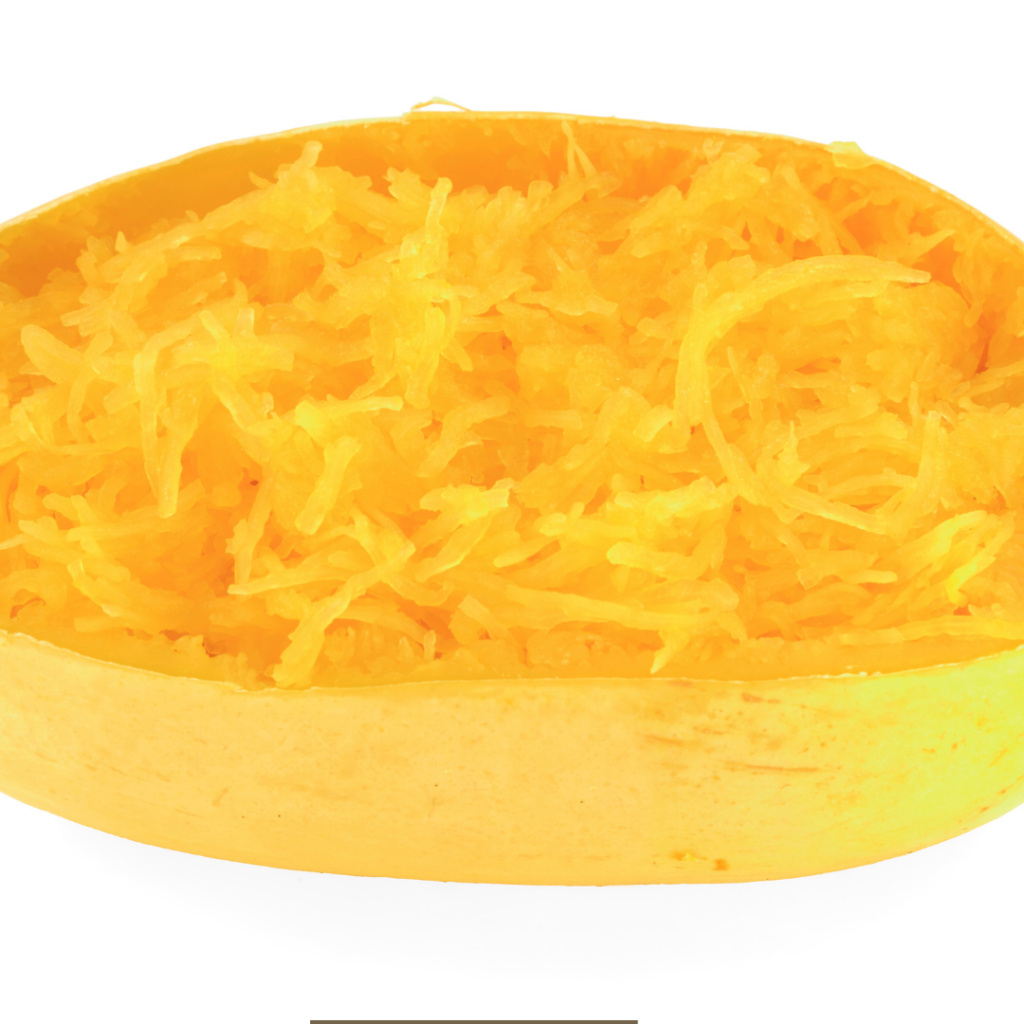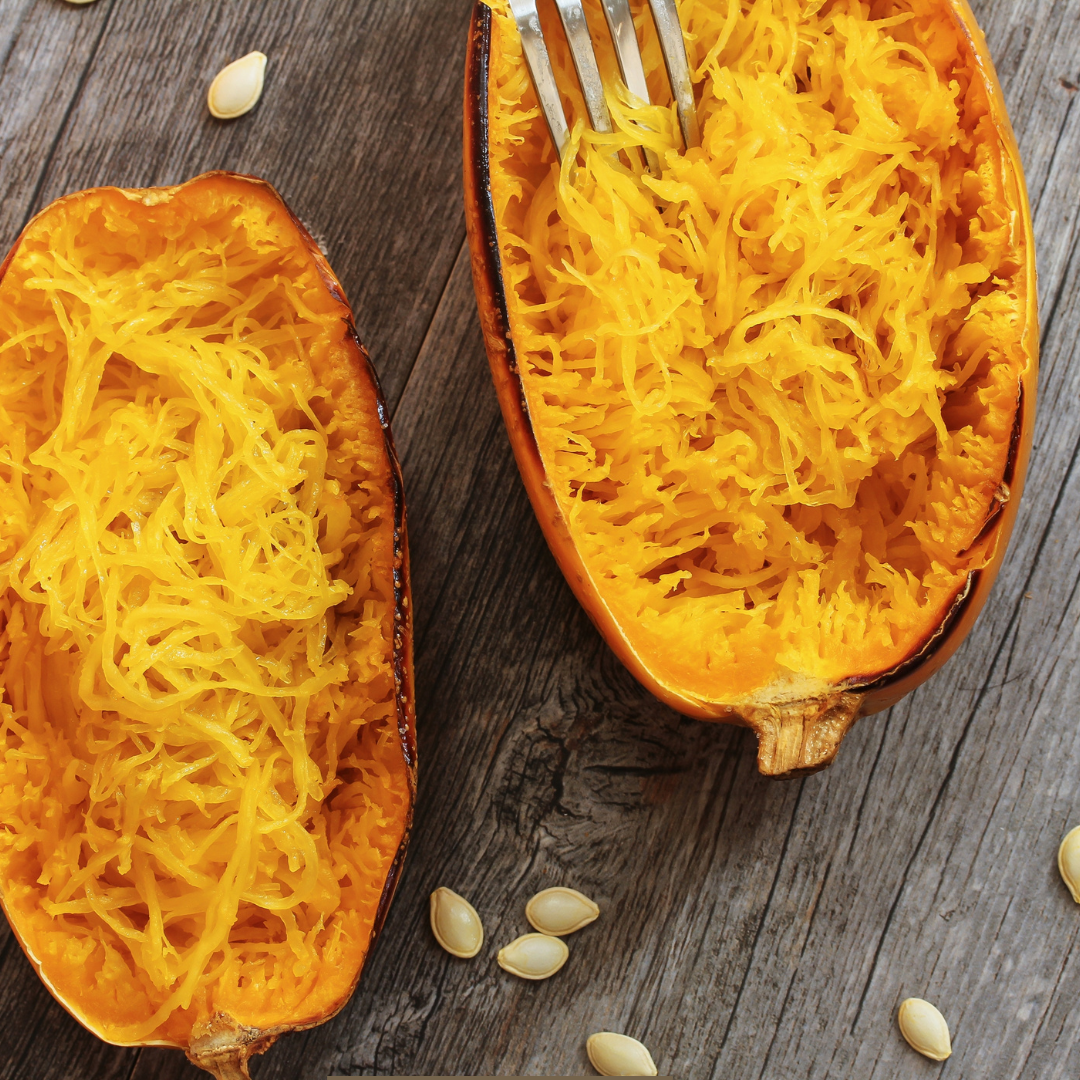I was captivated by the first encounter with spaghetti squash. The initial incision through its tough exterior revealed a world of potential that I couldn’t wait to explore. This isn’t merely about cooking; it’s an exploration of texture, flavor, and the joy of uncovering something wonderfully unexpected within the heart of something familiar.
Baking Spaghetti Squash in the Oven
Spaghetti squash is a type of winter squash whose flesh separates into strands resembling spaghetti when cooked. This unique texture makes it a popular low-carb and gluten-free alternative to traditional pasta. The squash has a mild flavor, allowing it to pair well with various sauces and seasonings.
Ingredients
- 1 medium spaghetti squash
- 2 tablespoons of extra virgin olive oil
- Salt, to taste
- Freshly ground black pepper, to taste
- Optional: Garlic powder, Italian seasoning, or other herbs and spices of your choice
Instructions
- Preheat Your Oven: Begin by heating your oven to 400°F (200°C). This optimal temperature allows the squash to cook through while caramelizing slightly on the outside for an added depth of flavor.
- Prepare the Squash: Carefully cut the spaghetti squash in half lengthwise. The skin is quite tough, so take your time and use a sharp, sturdy knife. To make this easier, you can pierce the squash several times and microwave it for a few minutes to soften the skin.
- Scoop Out the Seeds: Use a spoon to scrape out the seeds and the stringy bits that come with them. Consider washing and roasting the seeds separately for a crunchy snack to reduce waste.
- Season: Drizzle the inside of each squash half with olive oil, ensuring it’s well-coated. Season generously with salt and pepper, and add any additional spices or herbs you might enjoy. Rub the seasoning in to distribute the flavors evenly.
- Bake: Cut the squash halves down on a baking sheet lined with parchment paper. This position helps steam the squash from inside, ensuring even cooking while allowing the edges to get a nice golden-brown color.
- Check for Doneness: Bake for about 40 to 60 minutes, depending on the size of your squash. You’ll know it’s done when the flesh is tender and easily shreds with a fork into spaghetti-like strands.
- Shred and Serve: Let the squash cool just enough to handle, then use a fork to gently pull the flesh away from the skin, creating your “spaghetti.” Serve as a base for your favorite pasta sauces or as a delightful side dish seasoned to your liking.
Tips for Perfected Baked Spaghetti Squash
- Choosing the Squash: Look for a squash that feels heavy for its size and has firm, unblemished skin. Smaller squash tend to be sweeter and less fibrous.
- Cutting Safely: To mitigate the risk of the knife slipping while you’re cutting, you can slice off a small piece of the squash to create a flat, stable base.
- Flavor Variations: Before baking, consider brushing your squash with a mixture of melted butter, garlic, and herbs for a richer flavor profile.
- Storage: Baked spaghetti squash can be stored in an airtight container in the refrigerator for up to 5 days, making it a fantastic make-ahead ingredient for easy meal prep.
- Serving Suggestions: While traditional tomato-based sauces are always a hit, don’t shy away from experimenting with pesto, alfredo, or even a simple drizzle of good-quality olive oil and a sprinkle of Parmesan cheese.
Ingredients Substitutes

Baking spaghetti squash in the oven is a delightful and versatile culinary venture. It stands out for its adaptability, making it a perfect fit for various dietary preferences and pantry stocks. If you find yourself missing an ingredient or looking to adjust the recipe to fit specific dietary needs or flavor profiles, there’s ample room for creativity.
Spaghetti Squash Substitutes
While the star of this dish is unmistakably the spaghetti squash, on occasions when it’s not available, some alternatives can mimic its texture or role in recipes:
- Zucchini: Used to make “zoodles,” zucchini can be spiralized to create a pasta-like texture. Though not identical in flavor to spaghetti squash, it’s a great low-carb alternative.
- Butternut Squash: When thinly sliced and baked, butternut squash can offer a sweet, slightly nutty flavor. It doesn’t separate into strands but can be a delightful base for sauces.
Olive Oil Substitutes
Olive oil adds a rich flavor and helps to roast the squash perfectly, but other oils can be used based on availability or dietary preference:
- Coconut Oil is a good option for a slightly sweet taste and can add a rich, moist texture. It’s ideal for those avoiding animal products.
- Butter or Ghee: For a richer, more decadent flavor, butter or ghee can be used, especially if pairing the squash with flavors that benefit from a nutty, toasted character.
- Avocado Oil: With a high smoke point and mild flavor, avocado oil is perfect for roasting and is a heart-healthy option.
Seasoning Substitutes
The simple seasoning of salt and pepper can be customized or substituted to align with what’s available or to suit specific flavor preferences:
- Herbs and Spices: If you’re out of Italian seasoning, consider making your own blend with dried oregano, thyme, rosemary, and basil. For a more pungent flavor, garlic powder can be replaced with minced fresh garlic.
- Nutritional Yeast: For a cheesy flavor without the dairy, nutritional yeast can be a fantastic addition, especially when aiming for a vegan dish.
- Lemon Juice or Zest: Adding a bit of lemon juice or zest can brighten the dish, offering a refreshing contrast to the squash’s natural sweetness.
Final Thoughts
Mastering the art of Baking Spaghetti Squash in the Oven is a testament to the joy of simplicity in cooking. With these instructions and tips, you’re well on your way to incorporating this nutritious, versatile vegetable into your culinary repertoire, proving that sometimes, the most unassuming ingredients can be extraordinary.
More Pasta Recipes:
- Jo Mama’s Spaghetti Recipe
- Rattlesnake Pasta Recipe
- Domino’s Pasta Primavera Recipe
- Firebirds Chicken Pasta Recipe
- Cheesecake Factory Four Cheese Pasta Recipe (Copycat)
[penci_recipe]
